Related Research Articles

Bank robbery is the criminal act of stealing from a bank, specifically while bank employees and customers are subjected to force, violence, or a threat of violence. This refers to robbery of a bank branch or teller, as opposed to other bank-owned property, such as a train, armored car, or (historically) stagecoach. It is a federal crime in the United States.
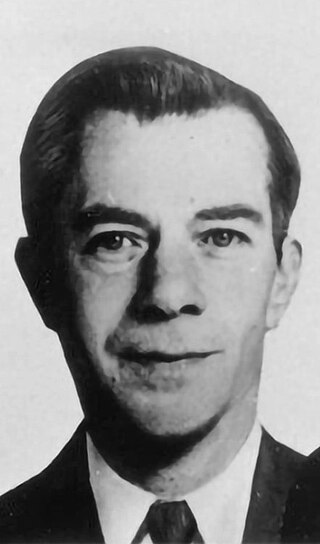
William Francis Sutton Jr. was an American bank robber. During his forty-year robbery career he stole an estimated $2 million, and he eventually spent more than half of his adult life in prison and escaped three times. For his talent at executing robberies in disguises, he gained two nicknames, "Willie the Actor" and "Slick Willie". Sutton is also known as the namesake of the so-called Sutton's law, although he denied originating it.
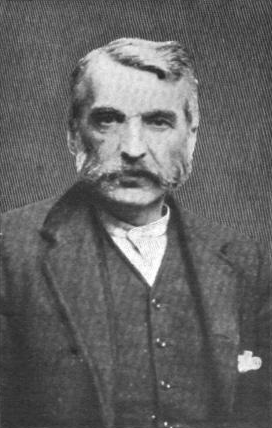
Adam Worth was a crime boss and fraudster. His career in crime, stretching from the United States to Europe and southern Africa, included the infamous theft of Gainsborough's celebrated Portrait of Georgiana, Duchess of Devonshire, which he retained for 25 years. In London, he lived as a respected member of high society under the alias Henry Judson Raymond. Scotland Yard Detective Robert Anderson nicknamed him "the Napoleon of the criminal world" based on his short stature. He is widely considered the inspiration for Sir Arthur Conan Doyle's fictional criminal mastermind James Moriarty in the Sherlock Holmes series.

The Great Train Robbery is a bestselling 1975 historical novel written by Michael Crichton, his third novel under his own name and his thirteenth novel overall. Originally published in the US by Alfred A. Knopf, it was later published by Avon, an imprint of HarperCollins Publishers. The novel tells the story of the Great Gold Robbery of 1855, a massive gold heist that takes place on a train travelling through Victorian-era England on 22 May 1855. Most of the book takes place in London. A 1978 film adaptation was written and directed by Crichton.

The Great St. Louis Bank Robbery is a 1959 American heist film directed by Charles Guggenheim and starring Steve McQueen as a college dropout hired to be the getaway driver in a bank robbery.

Brenden James Abbott is a convicted Australian bank robber. He is reported to have stolen and hidden millions of dollars, and was dubbed "the postcard bandit" by police seeking media coverage.

The Postcard Bandit is a 2003 Australian television film directed by Tony Tilse, loosely based on the life of a convicted bank robber Brenden James Abbott. The plot is based on the biographical book No Fixed Address by newspaperman Derek Pedley, who also assisted screenwriter Peter Gawler.
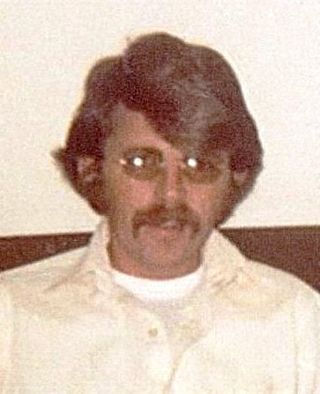
Leslie Isben Rogge is an American criminal who was the first criminal on the FBI's Ten Most Wanted Fugitives to be apprehended due to the internet.

Fredericka "Marm" Mandelbaum operated as a criminal fence to many of the street gangs and criminals of New York's underworld, handling between $1–5 million in stolen goods between 1862 and 1884. Like her principal rival John D. Grady and the Grady Gang, she also became a matriarch to the criminal elements of the city and was involved in financing and organizing numerous burglaries and other criminal operations throughout the post-American Civil War era.

The Santa Claus Bank Robbery occurred on December 23, 1927, in the Central Texas town of Cisco. Marshall Ratliff, dressed as Santa Claus, along with Henry Helms and Robert Hill, all ex-cons, and Louis Davis, a relative of Helms, held up the First National Bank in Cisco. The robbery is one of Texas' most infamous crimes, having invoked the largest manhunt ever seen in the state. Boyce House, editor of the Ranger Times, a newspaper in the county at the time, wrote that this was "the most spectacular crime in the history of the Southwest ... surpassing any in which Billy the Kid or the James boys had ever figured."
Ralph Fults was a Depression-era outlaw and escape artist associated with Raymond Hamilton, Bonnie Parker and Clyde Barrow of the Barrow Gang.
George Allan Heyl was a South African criminal, member of the Stander Gang.

Sophie Lyons was an American criminal and one of the country's most notorious female thieves, pickpockets, shoplifters, and confidence women during the mid-to-late 19th century. She and her husbands Ned Lyons, Jim Brady and Billy Burke were among the most sought-after career criminals in the U.S. and Canada, being wanted in several major cities including New York City, Philadelphia, Boston, Detroit and Montreal from the 1860s until the turn of the 20th century.
Jim Clark was an American bank robber and Depression-era outlaw. A longtime career criminal in Oklahoma during the 1920s, Clark was associated with Wilbur Underhill, Harvey Bailey and Robert "Big Bob" Brady and remained a public enemy in the state of Kansas until his capture and imprisonment in 1934.
The Cretzer-Kyle Gang was a Depression-era criminal group led by Joseph "Dutch" Cretzer and Arnold Thomas Kyle during the mid-to late 1930s. Largely active in the West Coast, they were one of the few groups to gain national attention outside the Midwest and also one of the last groups to be captured by the FBI at the end of the decade. Cretzer was killed in a failed attempt to escape Alcatraz resulting in the 1946 prison riot.
The Whittemore Gang was a group of bank robbers active in the Mid-Atlantic and Eastern United States during the mid-1920s. Led by Richard Reese Whittemore, the gang, including his wife Margaret, went on a year-long crime spree committing payroll, bank and jewelry robberies in Maryland and New York before their capture in 1926.
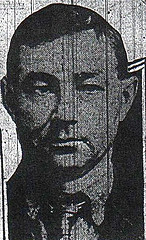
Herman Karl Lamm, known as Baron Lamm, was a German-American bank robber. A former Prussian Army soldier who immigrated to the United States, Lamm believed a heist required all the planning of a military operation. He pioneered the concepts of "casing" a bank and developing escape routes before conducting the robbery. Using a meticulous planning system called "The Lamm Technique", he conducted dozens of successful bank robberies from the end of World War I.
Forrest Silva "Woody" Tucker was an American career criminal first imprisoned at age 15 who spent the rest of his life in and out of jail. He is best known as an escape artist, having escaped from prison "18 times successfully and 12 times unsuccessfully", by his own reckoning. The 2018 film The Old Man & the Gun, starring Robert Redford as Tucker, is based on his life.
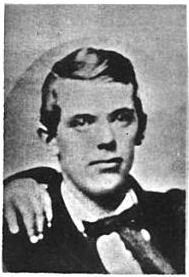
Samuel "Worcester Sam" Perris was a 19th-century French-Canadian burglar, safe cracker and bank robber. An underworld figure in New York City and throughout the northeastern United States during the post-American Civil War era, he was called "one of the most notorious criminals in America".

James "Old Jimmy" Hope was a 19th-century American burglar, bank robber and underworld figure in Philadelphia and later New York City. He was considered one of the most successful and sought after bank burglars in the United States during his lifetime as well as a skilled escape artist for his repeated breakouts from Auburn State Prison in New York.
References
- 1 2 Worth, Richard (2001). Great Robberies. Infobase Publishing. p. 22.
- ↑ Conway, J. North (2009). King of Heists: The Sensational Bank Robbery of 1878 That Shocked America. Globe Pequot. pp. 75–76.
- ↑ "The real Moriarty". Sunday Telegraph. 8 June 1997. Retrieved 19 December 2023.